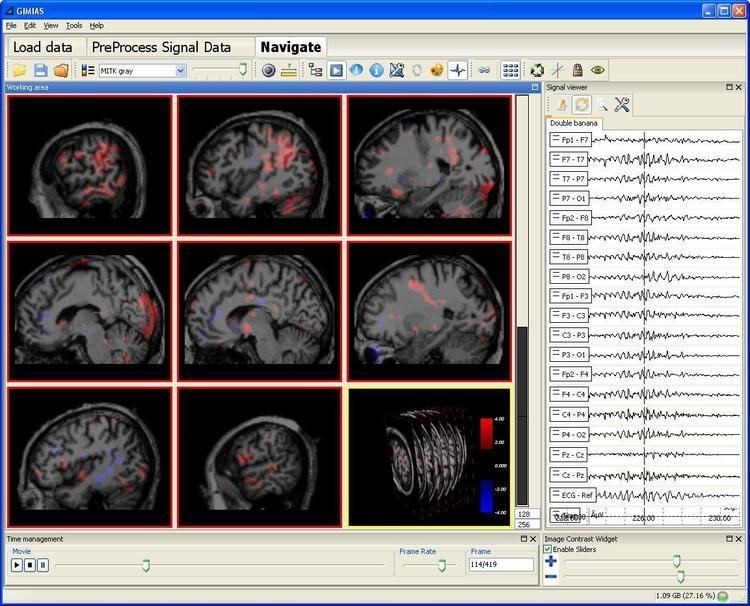Original author(s) Operating system | Stable release 1.5.r4 / October, 2012 Available in C++ | |
 | ||
Type Scientific visualization and image computing | ||
GIMIAS is a workflow-oriented environment focused on biomedical image computing and simulation. The open source framework is extensible through plug-ins and is focused on building research and clinical software prototypes. Gimias has been used to develop clinical prototypes in the fields of cardiac imaging and simulation, angiography imaging and simulation, and neurology
Contents
GIMIAS is being funded by several national and international projects like cvREMOD, euHeart or VPH NoE.
About GIMIAS
GIMIAS stands for Graphical Interface for Medical Image Analysis and Simulation. GIMIAS provides a graphical user interface with all main data IO, visualization and interaction functions for images, meshes and signals. GIMIAS features include:
GIMIAS is a development framework that allows developers to create their own medical applications using different plug-ins that can be dynamically loaded and combined. The prototypes developed on GIMIAS can be verified by end users in real scenarios and with real data at early development stages.
Is developed using C++ language, has a plug-in architecture, and is cross-platform by means of the standard CMake tool. Is possible to integrate new libraries using CSnake tool and is based on common open source libraries like VTK, ITK, MITK, BOOST and wxWidgets. A plug-in can extend the framework adding new processing components, GUI components like toolbars or windows, new data processing types or new rendering libraries.
GIMIAS supports several types of plug-ins, starting from a simple DLL, a 3D Slicer compatible command line plug-in or a more complex GIMIAS plug-in with customized graphical interface. Automated GUI generation and extensible data object model allow to share plug-ins with other frameworks and empower interoperability.
The software is available on Windows and Linux, 64-bit and 32-bit.
History
Initial versions of the open source framework was released by the end of 2009 (GIMIAS 0.6.15 was released on October 2009).
In 2010, more effort was done to empower the open source framework itself, providing more functionality like workflow manager, 3D Slicer plug-in compatibility, signal viewer and customizable views. GIMIAS version 0.8.1, 1.0.0, 1.1.0 and 1.2.0 were released during this year.
GIMIAS Team have collaborated with:
GIMIAS is one of the tools used in the Virtual Physiological Human.
